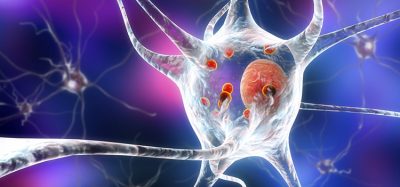Assay design for Alzheimer’s disease: key considerations and emerging trends
Posted: 26 April 2024 | Dr Emma Murphy (Alzheimer’s Research UK Oxford Drug Discovery Institute) | No comments yet
In this Q&A, we speak to Dr Emma Murphy, Head of Biology at the Alzheimer’s Research UK Oxford Drug Discovery Institute. Among her many insights, she discusses how the challenges in developing reproducible assays can be addressed, as well as strategies used to translate promising findings into clinically relevant tools and therapeutics. Looking forwards, she also explains how emerging trends in assay development for detecting early-stage neurodegeneration might impact future drug discovery efforts.


What are the key considerations when designing high-throughput screening assays for potential neurodegenerative disease drug candidates?
The key considerations when designing high-throughput screening assays for neurodegenerative disease are in essence the same as those in other disease areas: Miniaturisation, robust and fast readout, reproducibility, and the ability to automate. Preferred screening assays are performed in simplified systems as close as possible to disease relevant biology, for example SH-SY5Y and THP-1 cell lines mimicking induced pluripotent stem cell (iPSC)-derived neurons and microglia respectively. Identification of novel chemical matter through high-throughput screens is often target-based and performed with purified proteins, with orthogonal assays and confirmation of hits being performed in more relevant cell-based systems.
How do researchers address the reproducibility and reliability challenges associated with assay development for neurodegenerative diseases like Alzheimer’s?
Reproducibility and reliability of screening assays is a priority for screening campaigns in all disease areas but can be particularly challenging in neurodegenerative research. iPSC technologies have enabled in vitro models of neurodegenerative diseases, providing insights into previously inaccessible human cell types. However, iPSC lines have inherent variability with differences between donor individuals, genetic stability and experimental variability leading to reduced reproducibility. Good controls and adherence to protocol are the keys to addressing these challenges with increased controls to improve statistical power to detect and reduce experimentally induced effects. Even in simplified cell-free systems many of the reagents used in neurodegenerative research are biologics, such as Aβ and α-synuclein, that are difficult to consistently produce. Again, controls and careful experimental methodologies are crucial to ensuring reproducibility with orthogonal assays to demonstrate that the effects seen in screening assays are genuine.
What strategies are being explored to translate promising preclinical assay findings into clinically relevant diagnostic tools or therapeutic interventions for Alzheimer’s disease?
Despite extensive research, the aetiology of Alzheimer’s disease is complex, and although there is an increasing understanding of the pathogenesis of neurodegenerative diseases, its exact cause remains unknown. Over the past two decades the pharmaceutical industry has reduced its activity in neurodegenerative research due to the high risks of drug discovery programmes. In line with the Prime Minister’s Challenge on Dementia 2020, in 2015 Alzheimer’s research UK launched the Drug Discovery Alliance (DDA), a network of three Institutes at the Universities of Oxford and Cambridge, and University College London. Led by drug discovery experts in partnership with world-leading academic researchers, the DDA bridges the gap between discovery science taking place in universities across the UK and drug development expertise in pharmaceutical companies. By de-risking targets early, these institutes are enabling translation of promising early drug discovery programmes into novel therapeutic interventions for neurodegenerative diseases.
Continuing to emphasise the need for collaboration, in 2019 the UK Dementia Research Institute (UKDRI) hosted the first meeting of the Dementia UK Ecosystem, a major UK initiative aiming to bring together the UK major dementia research programmes, dementia funders, industry and the Dementia Discovery Fund to work together to transform our understanding of dementia and how to tackle it. By sharing resources, expertise and ideas and developing collaborations at the basic-clinical interface, this initiative will expediate the translation of basic science to the clinic for dementias.
What role do advanced computational methods play in enhancing the efficacy and efficiency of assay development and screening processes for neurodegenerative disease targets?
Computational methods have improved the efficiency of many stages of the early drug discovery pipeline, from target identification to lead optimisation. Advanced computational methods have greatly enhanced the ability to develop assays for compound screening, methods like computer-aided design of experiment (DoE) mean that multiple variables can be tested using the minimum number of experiments, allowing for rapid assay design and optimisation. Complementing experimental approaches, in silico screening and molecular docking reduce the time required to identify and optimise small molecule modulators and can greatly reduce the associated costs. As the data generated from early drug discovery programs becomes more complex, with large datasets generated by RNAseq and proteomics, advanced computational methods for analysis are essential.
What are the emerging trends in assay development for detecting early-stage neurodegeneration, and how might they impact future drug discovery efforts?
There is substantial research ongoing to discover novel, easy to access biomarkers for early predictions of neurodegenerative diseases, not only to identify candidates for early treatment but also to stratify patients for clinical trials. The ability to predict who may go on to develop neurodegeneration would allow us to identify selected populations for clinical trials for treatments which aim to target the disease early in the course of progression. Current biomarkers for neurodegenerative diseases rely mainly on visualising Aβ plaques and tau tangles, using MRI and PET, however these are only useful in later stages of disease progression as determined by a decline in cognitive health.
In 2023 Alzheimer’s Society, Alzheimer’s Research UK, together with the National Institute for Health and Care Research (NIHR), jointly launched the Blood Biomarker Challenge which will gather the information needed to introduce a blood test for dementia into UK healthcare systems. Blood tests to measure plasma Aβ42/40 ratio, p-tau, serum neurofilament light chain (NfL) and glial fibrillary acidic protein (GFAP), could not only revolutionise the way dementia is diagnosed, but also be used as a pharmacodynamic readout to measure target engagement and efficacy of potential disease-modifying therapeutics in preclinical drug discovery.
Seed amplification assays, which can detect minute amounts of pathogenic aggregating protein seeds, such as Tau and α-synuclein, from accessible biofluids, also have potential as diagnostic tools for neurodegenerative diseases and present another attractive pharmacodynamic biomarker. Combinations of quantitative seed amplification assays with blood tests and novel cell-state specific PET ligands for neuroimaging, currently under development, have the potential the improve diagnostic accuracy, providing early diagnosis critical for preventing neurodegenerative disease progression, and to significantly impact the time and cost associated with finding and validating novel therapeutics.
About the author


Dr Emma Murphy, Head of Biology at the Alzheimer’s Research UK Oxford Drug Discovery Institute
Emma joined the Alzheimer’s Research UK Oxford Dug Discovery Institute (ODDI) in 2015 to build and lead an assay development and screening team to develop and run biochemical and biophysical high-throughput screening assays for neurodegenerative targets. The team aims to identify chemical matter as tool compounds to validate novel neurodegeneration targets and as potential leads for therapeutic intervention. Emma is now the ODDI Head of Biology, the group works to validate targets that modulate neuroinflammation and organelle dysfunction through the development of novel in vitro assays utilising human iPSC macrophages, relevant cell lines and primary cells. Targets that hold potential for further drug development are prosecuted via screening assays, and the biology team have developed cell based, biochemical and biophysical screening assays to identify novel small molecule compounds. Our goal is to translate cutting-edge academic research in neurodegeneration to drug discovery programmes.
Related topics
Assays, Clinical Trials, Drug Discovery, In Vitro, Neurosciences
Related conditions
Alzheimer's disease (AD)








